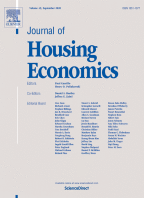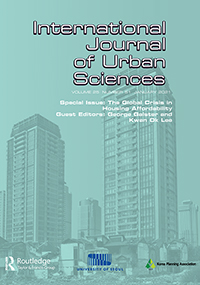
Many housing policies aim to increase supply and reduce prices through rezoning, relying on the assumption that increasing allowable densities automatically accelerates the rate of housing supply.

This paper estimates housing choice differences between households with and without remote workers. Prior to the pandemic, the expenditure share on housing was more than seven percent higher for remote households compared to similar non-remote households in the same commuting zone.

A globally connected, locally centred housing justice movement calls for comprehensive reforms of policies that influence the distribution and affordability of housing.

What is the role of migration in regional evolutions? I document that within-US migration causes a reduction in the unemployment rate of the receiving city over several years.

Housing is central in the reproduction of social inequalities. Beyond divides across populations, trends point to increasingly unequal housing-market dynamics across space.
We build a model of the US economy with multiple aggregate shocks that generate fluctuations in equilibrium house prices. Through counterfactual experiments, we study the housing boom-bust around the Great Recession, with three main results.

We study housing markets with multiple segments searched by heterogeneous clienteles. In the San Francisco Bay Area, search activity and inventory covary negatively across cities, but positively across market segments within cities.

Since the World Health Organization (WHO) declared the coronavirus infectious disease 2019 (COVID-19) outbreak a pandemic on 11 March, severe lockdown measures have been adopted by the Italian Government.
